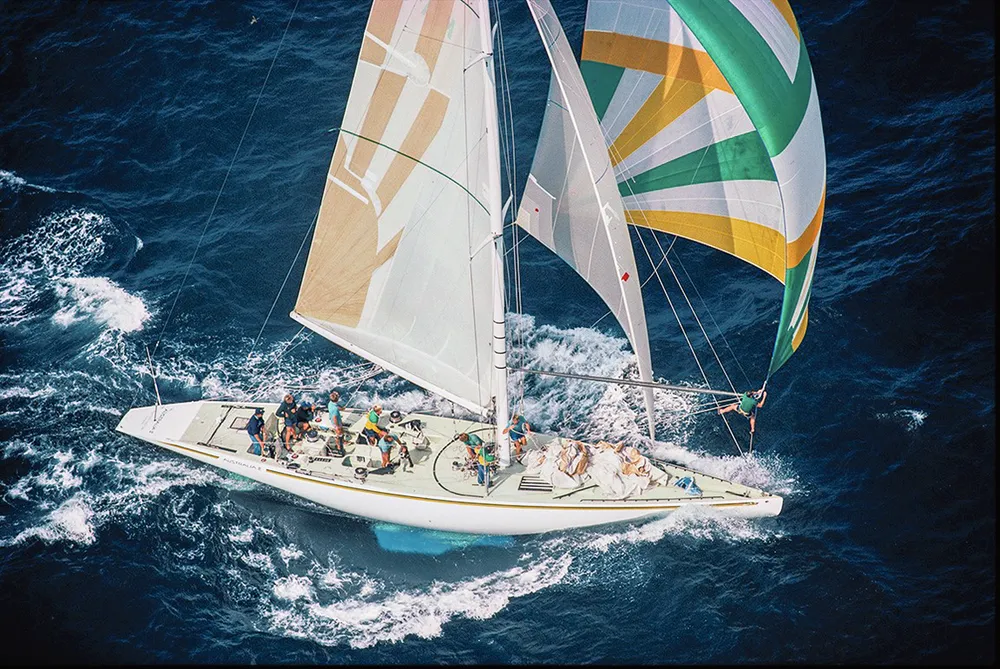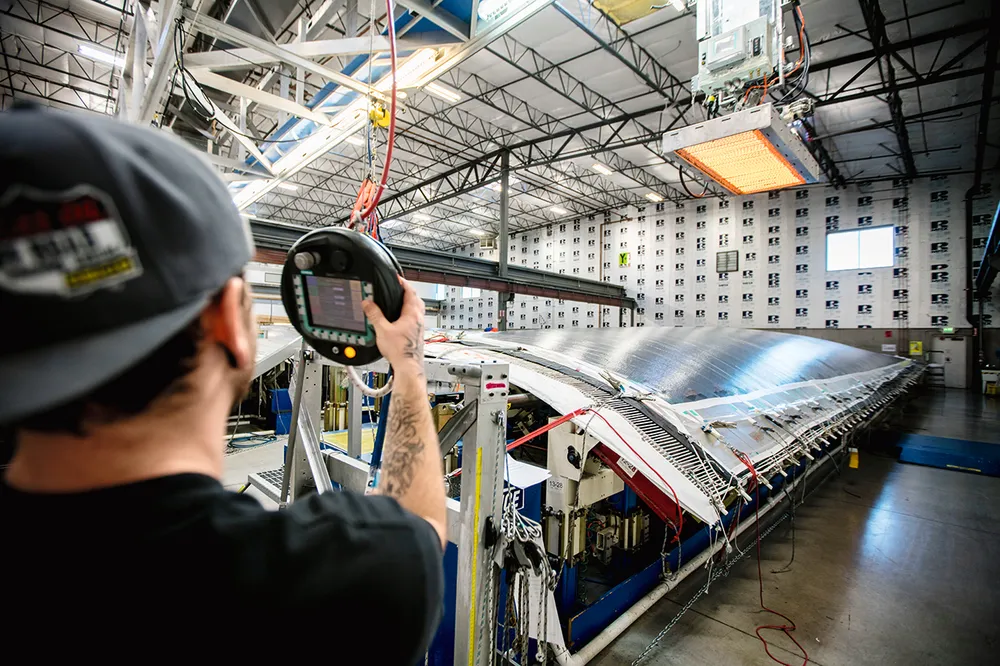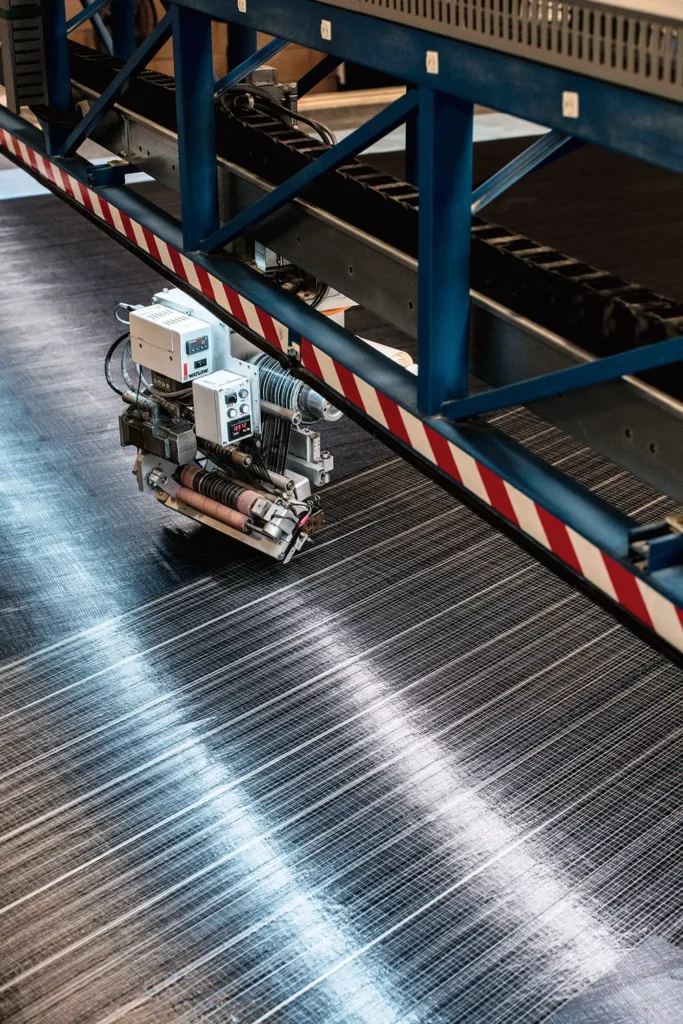The history of the America’s Cup and technical progress in the boating industry are closely linked. On the occasion of the 37th staging of the oldest sporting competition of modern times, we look back on the great innovations, some of which were inspired by well-known Swiss sailors.
The America’s Cup has always been a laboratory for technical developments. At the end of the 19th century, fierce competition broke out among ship designers, which was to help some of them achieve world fame. Everyone wanted to outdo the other with an even better boat design and an even more efficient hull shape. Nathanael Herreshoff and his contemporary Edward Burgess, later Olin Stephens and the Scotsmen William Fife III and Charles Nicholson, are still among the greatest in their guild today.
The ships were huge, heavy and heavily sailed. Reliance, the winning boat of 1903, was 61.26 meters long, 7.92 meters wide and weighed 189 tons, had 64 crew members and a sail area of 1500 square meters. As a Defender, the New York Yacht Club stipulated that the only Challenger from England for a long time had to travel across the Atlantic for the duel. There was a selfish ulterior motive behind this requirement. For such an ocean crossing, the Challenger needed a more robust boat than the Defender, which was logically heavier, more sluggish and slower and started with a corresponding handicap.
US dominance
Time and again, the Americans used protectionist measures to ensure that they did not lose their lead over the competition. For example, they prohibited their opponents from using certain components in order to secure exclusive rights. This was the case with sailcloth. The American sailmakers, who were the first to weave Dacron instead of cotton, were practically placed under embargo. They were forbidden from supplying the challenger with sails.
The first winches also came from America. They replaced the pulleys used until then and were first used on the Reliance, which won the 1903 Cup 3:0 against Sir Thomas Lipton’s Shamrock II. Interesting detail: they were attached below deck. Whether out of secrecy or for more aerodynamics is impossible to say.12-meter yachts also celebrated their premiere at the America’s Cup. The Courageous, designed by Olin Stephens, successfully defended the trophy in both 1974 and 1977.
Other innovations that we owe to the Cup are the shrouds made of profiled rod poles, the aluminum masts, the boom and mast nocks as a replacement for wooden rings and the multi-saling rig, which ensures a better hold of the mast. In 1983, the invention of the famous wing keel made a decisive contribution to the Australia II finally defeating the Liberty, steered by Dennis Conner, after 132 years of American domination. As espionage is part and parcel of the America’s Cup, the Australians had spared no effort to conceal architect Ben Lexcen’s invention from the public eye. As soon as the yacht came out of the water, it was covered up. However, the opposing teams left no stone unturned and even commissioned snorkelers to find out more about the underwater hull.

BY BEN LEXCEN THE KANGAROO STRUCK DOWN THE EAGLE.
Groundbreaking innovation from Switzerland
Switzerland played an important role in the technical innovations developed for the America’s Cup. With the invention of 3DL sails, it even triggered a small revolution in the scene. In 1988, Jean-Pierre Baudet designed the first sails without seams and subsequent deformation: the “tree dimensional laminated”, or 3DL for short, and realized the first prototype together with Luc Bois. Textile threads are laid over a positive mold and thermo-bonded between two robust Mylar films at 160°C using a vacuum process. The 3DL sails proved to be more stable and resistant than the sewn-together web sails, especially under high loads and friction. The 3DL sails won the America’s Cup five times: 1995, 2000, 2003, 2007 and 2010. The two long-standing business partners Gérard Gautier and Edouard Kessi went over the books and developed the 3Di sails. In this process, carbon threads or other materials such as PBO are spread into filaments of the order of a micron – and no longer in the millimeter range as with raw yarn. The wafer-thin filaments are then mixed with soft resin. This process is known as the amalgam or prepreg process. Thin Ply Technology (TPT) is then used. Using a giant plotter, fibers and resin are applied in precisely calculated quantities and aligned according to the load. There is no longer a sandwich of threads and Mylar films.
3Di sails on the rise
To manufacture the revolutionary sails, North opened three factories in Minden, Nevada (USA), near the Californian border. The production halls there no longer have wooden floors with recessed pits for the seamstresses. In their place are huge computer-controlled plotters. They apply prepreg and react within microseconds. The development of the 3Di sails was largely financed by Ernesto Bertarelli. Knowing that he could only win the America’s Cup 2009 with a fast boat, he focused his research and innovation on the “engine” of the boat, i.e. the sails. He was therefore heavily involved in the work on the 3Di sails. When North decided to use the process under its own name, Bertarelli gave the invention to the company at cost price.
Other materials were also tinkered with during the America’s Cup. Aluminum replaced wood, especially for the masts. Then came composite materials, from the first glass fibers to Kevlar and other honeycomb structures. Later, carbon fiber made the parts more robust and lighter. Without carbon, there would probably be no foils today. In any other material, they would have shattered into a thousand pieces, and the first race on the AC72 catamarans in San Diego in 2013 would not have taken place either.
The wing sails of the AC72 and AC50 were dropped again, the current AC75s carry soft sails, but they have also been further developed. They are double-layered and are pulled close to the deck so that they have a similar effect to a wing sail, but at the same time minimize the Venturi effect. Last but not least, the electronics have benefited from the America’s Cup: think of the autopilots, the permanent stabilization, the control of the foil arms, the hydraulics and the energy.
THE J-CLASS SVEA, WITH 3DI SAILS



